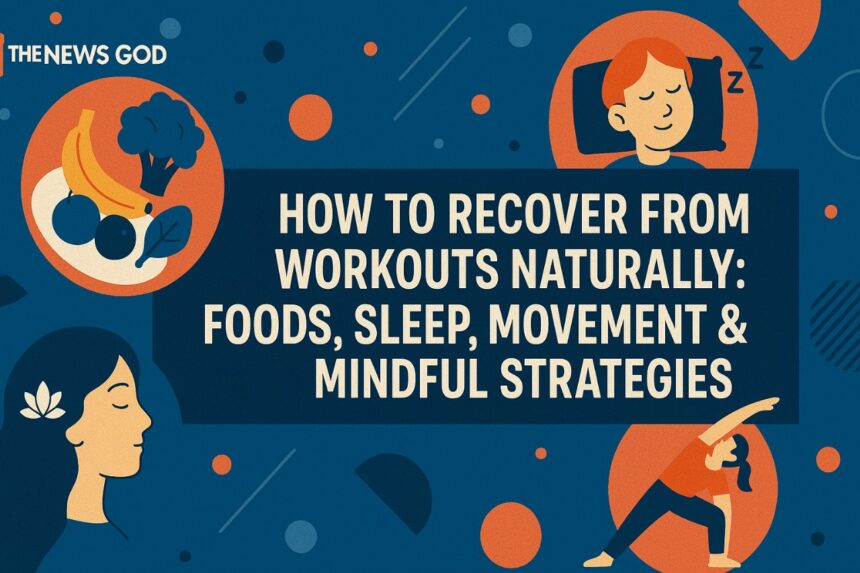Effective recovery is as critical as the workout itself—whether you’re an elite athlete or taking your very first steps in fitness. Recovery is a deliberate, multi-layered process involving nutrition, quality sleep, active movement, mind‑body integration, cutting‑edge techniques, and nature‑supported healing. Here’s a comprehensive roadmap to optimizing your recovery.
- 1. Nutrition: Rebuilding from the Inside Out
- 2. Sleep: The Body’s Regenerative Window
- 3. Movement: The Art of Active Recovery
- 4. Mind-Body Techniques: Nourishing Nervous System Harmony
- 5. Advanced Recovery Tech: NeuFit’s Neubie E‑Stim
- 6. Nature-Embedded Support: Bees, Trees & Fresh Air
- 7. Recovery Boosters: Complementary Techniques
- 8. Integrating Recovery Into Your Routine
- Conclusion: Mastering Natural Workout Recovery
1. Nutrition: Rebuilding from the Inside Out
After exertion, your body needs the right nutrients to rebuild fibers, restock energy reserves, reduce inflammation, and prepare for your next challenge.
Protein – The Cornerstone of Repair
- Why it matters: Protein provides amino acids necessary for repairing microscopic muscle tears caused by exercise.
- How much & when: Aim for 20–30 grams of high-quality protein within 1 hour post-workout. Options include eggs, low-fat dairy, lean meats, fish, or plant-based sources like tofu, legumes, and quinoa.
Carbohydrates – Replenishing Energy Stores
- The role they play: Carbs restore glycogen in muscles and the liver, which becomes depleted during exercise.
- Smart selections: Choose whole grains, fruits, veggies, and tubers. Combining carbs with protein enhances nutrient delivery through insulin-mediated uptake.
Healthy Fats – Cutting Recovery Inflammation
- Why fats count: Omega-3s help fight inflammation, minimize soreness, and support recovery.
- Foods to include: Fatty fish (salmon, mackerel), nuts (walnuts), seeds (flax, chia), and avocados.
Hydration & Electrolytes – The Fluid Foundation
- Why it’s vital: Hydration maintains circulation, nutrient transport, and thermoregulation. Electrolytes like sodium, potassium, and magnesium support muscular and nerve function.
- How to rehydrate: Drink water throughout the day and consider electrolyte-enhanced beverages post-sweat-heavy workouts or endurance sessions.
2. Sleep: The Body’s Regenerative Window
Rest is not just downtime—it’s when your body:
- Releases growth hormone for tissue repair and muscle adaptation
- Lowers cortisol, reducing catabolism and inflammation
- Supports immune function to prevent illness or burnout
Proven Sleep Enhancers
- Go to bed & wake up at consistent times
- Don’t use screens or bright lights 1 hour before bed
- Engage in relaxing pre-sleep habits (reading, stretches, breathing)
- Optimize your bedroom: keep it cool (~18–20 °C), dark, and quiet
High-quality sleep translates into deeper repair, reduced muscle damage, and enhanced training readiness.
3. Movement: The Art of Active Recovery
Recovering doesn’t mean lying still. Active recovery—low-intensity movement—enhances circulation, flushes metabolic waste, and eases muscle stiffness.
Top Recovery-Friendly Activities
- Walking: Boosts circulation with gentle stimulation
- Yoga/stretching: Enhances flexibility and calms the nervous system
- Swimming/cycling: Low-impact routines that balance work and rest
Keep intensity low—your goal is to encourage restoration, not add stress.
4. Mind-Body Techniques: Nourishing Nervous System Harmony
Physical recovery thrives when emotional and mental stress is managed effectively.
Integrating Mind-Body Practices
- Meditation & breathing exercises: Reduce cortisol and increase vagal tone
- Journaling & gratitude practices: Promote emotional clarity and resilience
- Forest bathing (shinrin-yoku): Mindfully immerse in nature for proven physiological uplift en.wikipedia.org+6environmed.pl+6en.wikipedia.org+6
Research shows 2–3 hour forest walks reduce blood pressure, cortisol, and promote immune markers like NK-cell activity environmed.pl+5pmc.ncbi.nlm.nih.gov+5vogue.com+5. Even short weekly sessions provide measurable benefits time.com.
5. Advanced Recovery Tech: NeuFit’s Neubie E‑Stim
Neubie Machine is an advanced neuromuscular electrical stimulation (NMES) device that delivers direct current to activate muscles and nerves for accelerated recovery.
Why Neubie Stands Out
- It retrains neuromuscular pathways through direct current, promoting neuroplasticity neupttech.com+8neu.fit+8neu.fit+8peakhp.net
- Helps reduce inflammation, relieve pain, and rebuild range of motion more efficiently vogue.com
- Allows lower exertion than traditional training while still stimulating muscle growth neupttech.com+3biospace.com+3neupttech.com+3
Muscle thickness, strength, and athletes recovery match high-load training—without the same stress levels longevity.stanford.edu+13biospace.com+13prnewswire.com+13. A Biostrap study also shows chronic pain reduction, better ROM, improved HRV, and better sleep in just seven weeks biospace.com.
6. Nature-Embedded Support: Bees, Trees & Fresh Air
Honey and Bee Products
Natural bee-derived remedies—like Manuka honey, propolis, and royal jelly—are rich in antimicrobial, anti-inflammatory, and antioxidant compounds that support immune function and accelerate healing. Recent studies even suggest a potential role in oncology: Manuka honey cancer research is exploring how its bioactive properties may inhibit tumor growth, enhance chemotherapy effectiveness, and reduce inflammation in cancer-related care.
Forest Bathing & the Power of Green Movement
Immersing yourself in nature isn’t just a mood booster—it’s a physiological upgrade. Forest environments and even urban green spaces can:
- Lower blood pressure and resting heart rate
- Decrease cortisol and adrenaline levels (your main stress hormones)
- Improve emotional stability, mood, and mental clarity
- Enhance immune defense via phytoncides and stimulation of natural killer (NK) cells
Whether you’re walking in a forest or sitting in a city park, reconnecting with the natural world is a potent form of restorative therapy—one that complements both conventional medicine and holistic recovery strategies.
7. Recovery Boosters: Complementary Techniques
- Cold therapy (ice baths/cold showers) minimizes inflammation and soreness
- Self-massage & foam rolling promote circulation and tissue release
- Mindful healing routines like Yin yoga, progressive relaxation, or breathwork
These refine your recovery toolkit, helping tailor your post-workout approach to current needs.
8. Integrating Recovery Into Your Routine
| Pillar | Daily Actions | Weekly Integration |
| Nutrition | Protein + carb + fat with hydration post-workout | Plan balanced meals; pre-prepare recovery snacks |
| Sleep | Optimize bedtime routine | Aim for 7–9h nightly |
| Movement | Post-workout walk or yoga stretch | 1–2 active recovery days |
| Mind-Body | 5 min daily breathing or journaling | 1 forest bath or nature walk (60–120 min) |
| Neubie | Use on sore/misaligned areas (if available) | 2–3 sessions per week during training cycles |
| Nature | Indoor plants; fresh air breaks | Weekend park/nature time |
| Boosters | Cold shower or massage post-session | Monthly sauna; foam roller routine |
Conclusion: Mastering Natural Workout Recovery
Natural recovery is not a passive state—it’s strategic restoration. By combining:
- Thoughtful nutrition,
- Restorative sleep,
- Active movement,
- Mind–body balance,
- Innovative Neubie stimulation, and
- Nature-infused healing
you create an optimized, sustainable approach that enhances both immediate performance and lifelong resilience. Recovery becomes a deliberate investment in your fitness and well-being, not just downtime.















